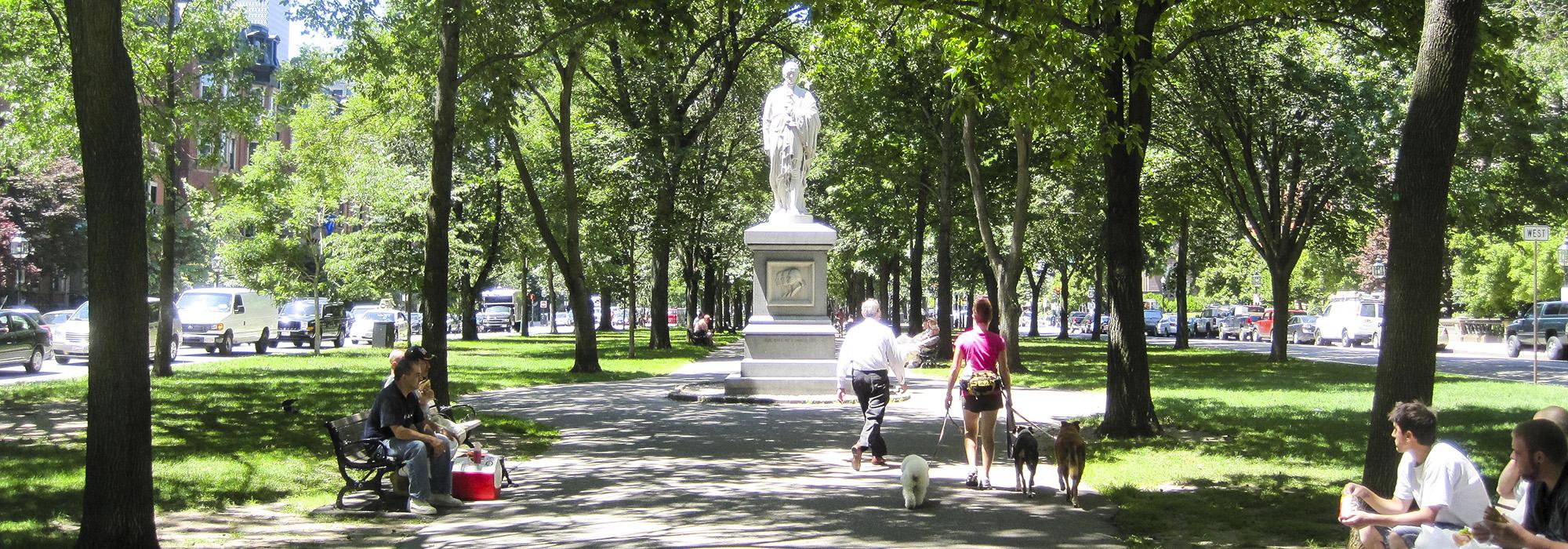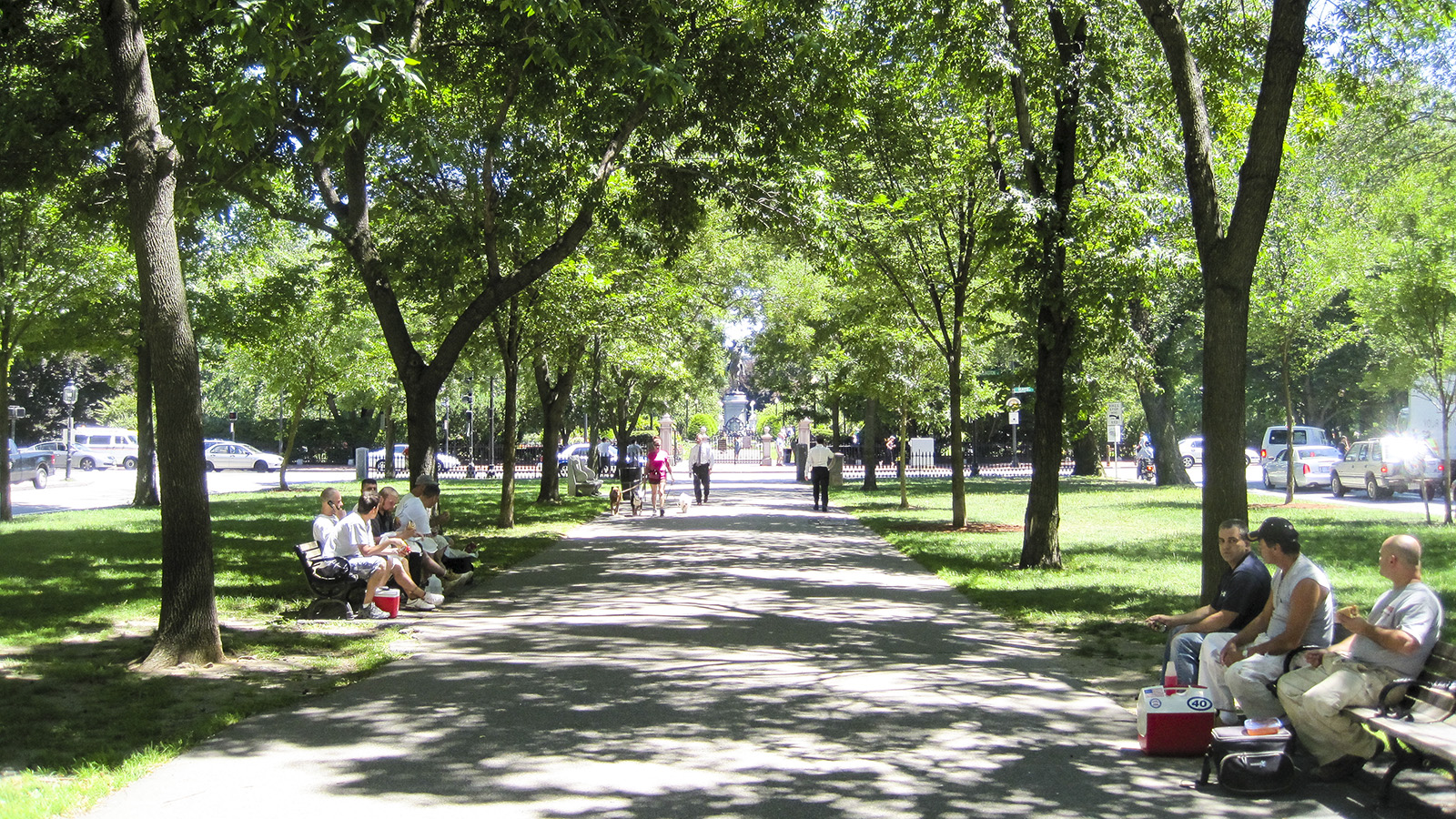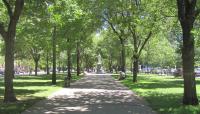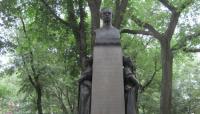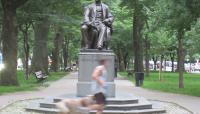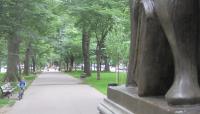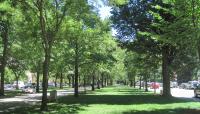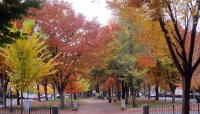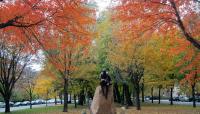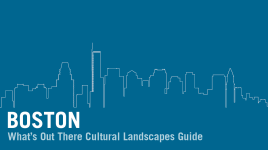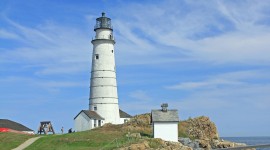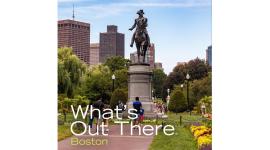Landscape Information
Initially laid out in the 1850s as part of Arthur Gilman’s plan for the Back Bay, this 32-acre axial boulevard that connects the Public Garden to Massachusetts Avenue and the Fens is a precursor to what would become the Boston Park System (designed between 1878 and 1895). Nestled into Boston’s Back Bay, the green space is visible from every intersection along its length. Unlike many sections of Boston that have consistent architectural styles, the boulevard’s setting is diverse, with many corners anchored by a distinctive church or private residence. In 1885 Frederick Law Olmsted, Sr., extended the Mall westward from Massachusetts Avenue to Charlesgate, however much of this section was later redesigned.
For the first eight blocks, the design palette is simple: lawn panels separated by a central pedestrian path; a cathedral-like canopy of trees; benches along the path; and, wrought iron fences at the entrance to each block. Nine sculptures have been added to the park since William Rimmer’s Alexander Hamilton in 1865. In 1970 local community members established the Friends of the Public Garden in an effort to improve Boston’s declining parks, including the Mall. Portions of Commonwealth Avenue were listed on the National Register of Historic Places in 1990 and additional sections were added to the listing in 2003. The portions of the Mall that are bounded by Commonwealth Avenue, Kenmore and Arlington Streets were designated as a Boston Landmark in 1978.



